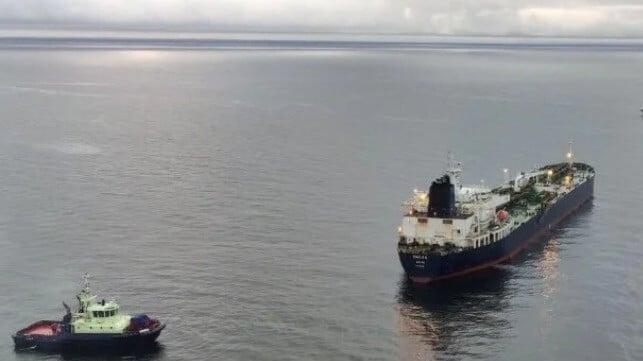Finland Detains Suspected Sabotage Ship for Serious Maintenance Issues

Finland's transport ministry has completed a port state inspection of the tanker Eagle S, the vessel suspected of sabotaging five Baltic Sea cables with its anchor on Christmas Day. After finding serious deficiencies, the agency has detained the vessel, preventing it from leaving port until safety issues have been corrected.
On December 25-26, Eagle S was boarded and detained by Finnish police on suspicion of severing four fiber-optic cables and one power cable by dragging its anchor. The tanker was diverted to Finnish waters, taken into custody and moved to a secure anchorage for inspection by criminal investigators. The safety inspection was a separate administrative procedure and began after the police process was well under way.
During the weeklong inspection off Porvoo, Traficom identified no less than 32 deficiencies aboard the aging Russia-linked tanker. The discoveries aligned with previous reports about the vessel's poor material condition: an independent vetting examination found dozens of problems aboard last year, according to Lloyd's List, and the tanker's last two port state control inspections turned up nearly three dozen more.
Traficom announced Tuesday that it has detained Eagle S for three of the 32 newly-identified problems. These "serious" issues relate to shipboard fire safety, navigation equipment and ventilation of the pump room. Other issues related to accommodations, electrical safety and general maintenance, as well as SMS deficiencies - a category identified in the last two inspections as well.
"The vessel has such deficiencies that it is not permitted to operate on it until the deficiencies are corrected. Correcting the deficiencies will require repair assistance from outside the vessel and will take time," says Sanna Sonninen, Finland's Director of Maritime Affairs.
Traficom's administrative detention ensures more time for police investigators to sweep the ship and question the crew, without the risk that a court order might allow the tanker to leave Finnish waters - an order that Eagle S's owner has sought. So far, Finland's courts have upheld the right of the National Bureau of Investigation (NBI) to hold the ship and continue its work. There are other barriers to departure: eight crewmembers have been served with travel bans for suspected criminal activity; the ship's cargo has been impounded for a customs investigation; a subsea cable operator has sued to seize the ship for civil damages; and - in the most definitive detention measure possible - Eagle S may soon be trapped by Baltic ice until the spring thaw, depending on weather.
So far, Finnish police have found strong technical indications that Eagle S caused the cable breaks. The tanker's AIS track lined up with the time and place of the cable outages. It was missing an anchor when it was boarded, and the anchor was later recovered from the bottom, heavily damaged, near the end of a 50-mile-long drag track. A dive inspection revealed that the tanker's hull has patches of newly missing paint near the bow, a possible sign of recent anchor chain contact.
Maritime security experts have expressed strong doubt that the damage could have been accidental, and suspicions immediately turned to Russian intelligence. The Eagle S is an identified part of the Russia-serving "dark fleet" of irregular tankers, and it was the third vessel in 15 months suspected of severing a subsea cable while headed to or from a Russian port. More broadly, European counterintelligence agencies have been combating a wave of Russian-backed arson and sabotage operations across the EU for more than a year.
Against this backdrop, Finland's security services have attracted praise for swift action in detaining the tanker. Unlike the last two cable-damage incidents, the suspect ship was diverted and seized before it could continue on its commercial voyage - even though it was operating in international waters, outside of Finland's legal jurisdiction. Finnish authorities say that the tanker crew voluntarily changed course towards Finland when requested; at an unspecified point during this evolution, a tactical boarding operation involving the Finnish armed forces and an elite Finnish police team occurred.
"We should make it clear to the Russians that anytime there's an accident like this, we are going to impound the vessel that was involved," said former US Army Commander in Europe Ben Hodges in an interview this week. "Until they get punched in the nose, until we make them stop, they will continue doing this. And it only gets worse until we act."
